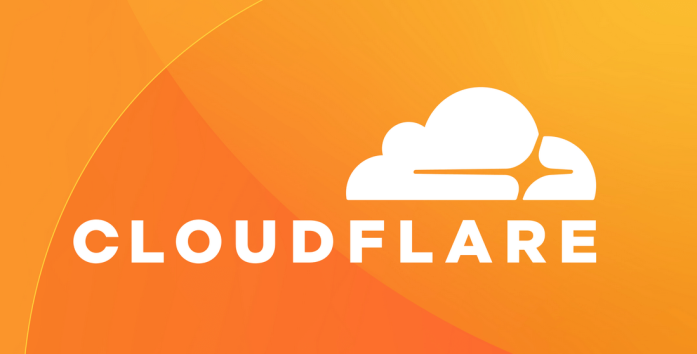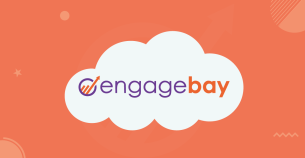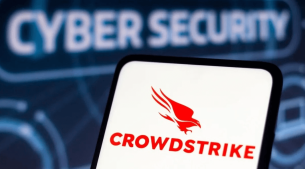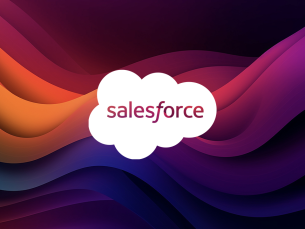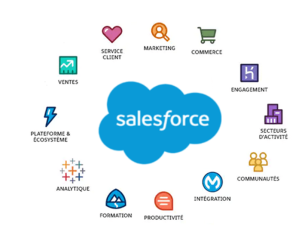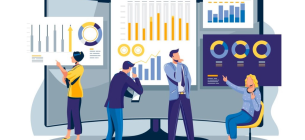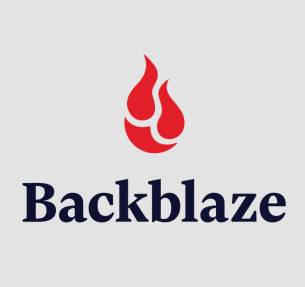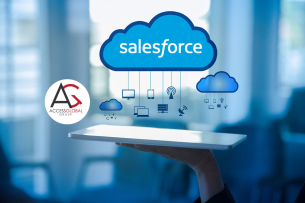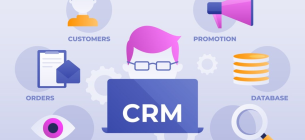In today's digital landscape, maintaining a strong online presence is more critical than ever. For businesses of all sizes, Cloudflare offers a suite of services designed to enhance website performance, security, and reliability. From content delivery networks (CDN) that speed up loading times to robust protection against cyber threats, Cloudflare is a go-to solution for many. However, the effectiveness of these services can come at varying costs depending on the pricing model you choose.
Understanding Cloudflare's pricing structure is essential for maximizing your investment. Are you aware of what features are included in each tier? Or how hidden costs could impact your bottom line? By demystifying Cloudflare’s pricing and clarifying what each plan entails, we aim to help small business owners and IT professionals alike navigate their options with confidence. Whether you’re just getting started or considering an upgrade, this guide will provide practical insights to ensure you're getting the best value for your money. Let’s dive in!
Understanding Cloudflare's Pricing Tiers
Cloudflare offers a tiered pricing structure that caters to various needs, from individual bloggers to large enterprises. At the entry level, their Free Tier provides essential functionalities such as basic DDoS protection and limited CDN services—ideal for personal sites or small businesses with modest traffic. While this tier might seem sufficient at first glance, it lacks advanced features that can drastically enhance security and performance, making it a temporary solution rather than a long-term strategy for businesses poised for growth.
As we move up the ladder, the Pro Plan becomes available at $20 per month per domain. This plan adds enhanced security measures like Web Application Firewall (WAF) capabilities and image optimization tools that can significantly improve page load speeds. For example, an online retailer handling thousands of visitors daily would benefit from these speed optimizations during peak shopping seasons—ensuring they retain customers even during high-traffic events while also safeguarding against potential attacks that could impact revenue.
For those looking to scale further, the Business Plan costs around $200 per month per domain and includes more robust features tailored toward larger organizations or e-commerce platforms. This tier advances with options like custom SSL certificates and real-time Web Analytics dashboards who want immediate insights into their site's performance. The extra layers of protection can offer peace of mind for small business owners who deal with sensitive customer information regularly--a crucial factor in maintaining trust.
The Enterprise Tier is designed for companies requiring customized solutions and dedicated support; pricing is based on specific business needs rather than a fixed rate. Aspects such as higher bandwidth limits or bespoke security configurations become vital when service availability directly affects operational efficiency. Businesses often overlook how a wrong choice in this area can lead to financial implications down the line due to increased downtime or cyber threats - so weighing each tier's offerings carefully is essential for both reputation management and budget considerations.
Key Features Across Pricing Plans
Cloudflare offers a robust suite of features across all its pricing tiers, making it a popular choice for businesses of varying sizes. One of the standout functionalities that is common to all plans is the Content Delivery Network (CDN). By caching static content at various locations worldwide, Cloudflare ensures that your website loads faster, regardless of where your users are located. For small businesses, particularly those with a global customer base or niche markets, this speed enhancement plays a critical role in user experience and can significantly reduce bounce rates.
However, as we dive deeper into the security features available on each pricing tier, some distinct differences emerge. The free plan includes essential protections like DDoS mitigation and shared SSL certificates. This level can serve effective for small e-commerce sites and blogs just starting out. In contrast, those opting for the Pro plan gain access to additional security enhancements such as Web Application Firewall (WAF) rules tailored to protect against specific vulnerabilities related to custom applications. This upgrade can be especially beneficial for online retailers who need layers of defense against potential threats that could compromise sensitive customer data.
Moving up to the Business and Enterprise tiers, you begin to see even more advanced security measures including WAF with enhanced support for PCI compliance—a must-have for businesses processing credit card transactions online. These higher levels also provide dedicated support options which can be invaluable during network emergencies. For instance, imagine a business experiencing an abrupt traffic spike due to a viral marketing campaign; having immediate access to tailored support could mean the difference between leveraging that traffic surge effectively versus facing downtime.
Overall, understanding these key features not only equips business owners and IT professionals with essential knowledge but also helps them better strategize how they want their online presence protected and optimized based on their unique needs and risk profiles. Each tier comes with its own set of advantages designed to solve specific challenges faced by businesses today—making careful consideration vital when selecting the best Cloudflare plan.
Cost-Benefit Analysis for Small Businesses
When evaluating the return on investment (ROI) for Cloudflare's various pricing tiers, small business owners need to carefully assess both their current needs and future goals. For instance, a local e-commerce store might initially see value in the free tier due to its basic CDN functionality and DDoS protection. However, if traffic spikes during holiday sales or special promotions, upgrading to a paid plan with enhanced security features and performance boosts could significantly improve site stability and user experience, directly impacting sales revenue.

To effectively determine which Cloudflare plan aligns best with your business objectives, consider conducting a thorough cost-benefit analysis. This starts with identifying the essential functions your website requires—whether that's faster load times, greater uptime reliability, or advanced security measures. The Pro plan may be suitable for those looking to add additional performance optimizations like image resizing or Polish (lossless image compression), while larger businesses handling sensitive customer data might urgently need the added layer of security offered in the Business tier or even custom configurations provided by Enterprise plans.
Additionally, take into account potential growth and changes in usage patterns within your company. A startup preparing for rapid scaling should not only evaluate the immediate costs of each tier but also project how their web demands will evolve over time. Investing in a higher-tier plan from early on may seem costly now but could prevent more significant expenses associated with migrating services later as traffic increases—an all-too-common oversight among small business owners trying to save money upfront.
In summary, understanding which pricing tier yields the greatest ROI hinges upon recognizing both present needs and future aspirations. By conducting regular assessments of your website's performance against your business goals, you can better gauge whether you're maximizing your investment in Cloudflare’s services or if adjustments are necessary to ensure optimal returns.
Hidden Costs to Watch Out For
When assessing Cloudflare's pricing, it's crucial for small business owners and web developers to be aware of potential hidden costs that could inflate their monthly expenses. While the base prices for each plan may seem straightforward, users often overlook add-ons that can significantly impact their final bill. For instance, if a company opts for additional features like advanced DDoS protection or enhanced performance tiers, these can accumulate quietly over time, leading to a higher-than-expected payout by month's end. Such extra services are typically presented in a way that might sound appealing but can lead many to feel they were caught off guard.
Another area where costs can creep up is through usage overages. Many plans come with specific limits—be it bandwidth, requests per second, or security measures—which are easily exceeded without careful monitoring. For example, if a website experiences unexpected traffic spikes due to an advertising campaign or viral posts, businesses might find themselves hit with charges for exceeding those preset quotas. This is particularly important for digital marketers and IT professionals who must keep track of how their clients’ activities influence overall spending.
Additionally, one of the most overlooked aspects when signing up for services like Cloudflare is the fine print nestled within service agreements. These documents often contain clauses detailing extra fees associated with everything from data retrieval requests outside traditional operating hours to charges incurred during system migrations or technical support beyond normal hours. Taking the time to read through this material not only uncovers potential pitfalls but also allows businesses to set realistic budgets based on complete information.
Ultimately, understanding both visible and hidden costs will arm you with the knowledge necessary to make informed decisions regarding your Cloudflare subscription. By closely examining what additional features you genuinely need and keeping an eye on your usage metrics, you’ll be better positioned to avoid any unpleasant surprises on your bill while maximizing the value derived from Cloudflare’s services.
Comparing Cloudflare with Competitors
When evaluating whether you are getting the best value from your website services, it’s important to consider not just Cloudflare’s offerings, but also how they stack up against competitors like Akamai, Amazon CloudFront, and Fastly. Each of these providers offers different pricing structures that reflect their unique features and target goals. For instance, while Cloudflare offers a robust free tier, alternatives might have more limited options unless you delve into paid plans straight away. Akamai is known for its enterprise-level solutions that come with higher costs but often deliver premium performance—in contrast to Cloudflare's balance between affordability and functionality. Understanding these nuances can help small business owners determine if their current provider truly meets their budgetary needs.
Switching from established competitors to Cloudflare has both advantages and potential drawbacks. Among the benefits, users may find that moving to Cloudflare simplifies their pricing strategy due to its straightforward tiers—ranging from free to custom enterprise solutions—allowing for easier budgeting compared to the convoluted pricing models seen in other services. Additionally, many users appreciate the multitude of included features within each plan, such as DDoS protection and content delivery network (CDN) capabilities without hefty additional fees. However, businesses should also be wary of potential transition hiccups—for example, migrating DNS records or reconfiguring security settings could require extra time and resources.
Moreover, it's crucial for organizations already using other providers to assess whether the switch would indeed yield better performance and cost-efficiency in the long run. Some operations might rely heavily on specific integrations that existing competitors provide at no extra charge; thus it’s wise to conduct thorough research into possible interruptions in service during a transition period. This type of analysis is essential—not just for calculating immediate costs—but also when contemplating future growth as companies scale up their digital presence.
In summary, while comparing Cloudflare against competitors reveals various strengths and weaknesses in terms of pricing structures and service inclusions, small business owners must take a tailored approach in evaluating what best fits their evolving requirements. The key takeaway should be an informed decision around both short-term savings versus long-term functionality and support—ensuring that any switch made contributes positively to overall online presence rather than complicating it further.
Customizing Your Plan: Add-ons and Upgrades
When it comes to optimizing your experience with Cloudflare, the ability to customize your plan through various add-ons and upgrades can be a game changer. Although the base pricing tiers offer an array of essential features for website performance and security, businesses often find that unique requirements call for additional functionalities. For instance, small businesses operating in highly competitive markets may benefit from enhanced security protocols like DDoS protection or Web Application Firewall (WAF) on higher-tier plans. These optional features can safeguard sensitive customer data while ensuring compliance with industry regulations—vital concerns for maintaining trust and credibility.
Moreover, as businesses grow and their needs evolve, so too should their Cloudflare configurations. The service's scalability is one of its strongest assets; upgrading to additional performance enhancements or security measures can happen seamlessly without needing a complete overhaul of existing setups. Take the example of a growing e-commerce platform that initially started on the free tier but later opted for the Pro plan, which includes image optimization services through Polish and Mirage features. These capabilities allow for faster load times while reducing bandwidth consumption—especially crucial during high-traffic events such as Black Friday sales when user experience can directly impact conversion rates.
However, it's important not to rush into every available upgrade. Evaluating your specific business requirements against potential return on investment is critical before committing to any additional costs. Conducting regular assessments of web traffic patterns, usage statistics, and threat detection levels helps ascertain whether these add-ons will provide tangible benefits for your organization or if you're simply adding unnecessary complexity—and expense—to your tech stack.
In summary, leveraging customizable options within Cloudflare’s environment allows you to craft a unique solution tailored precisely to your operational needs. Whether you're enhancing security features, improving site speed through performance upgrades, or examining how these options align with future growth ambitions, understanding which add-ons best fit your objectives will empower you not only to invest wisely but also maximize the value derived from Cloudflare’s vast range of offerings.
Case Studies: Real-Life Cost Scenarios
To better understand how Cloudflare's pricing tiers can impact business performance, let’s explore a few real-life case studies that showcase the diverse strategies small businesses employ. One significant example is a local e-commerce startup that began with the free tier. This business quickly expanded its customer base and rapidly increased website traffic. The founders took advantage of the basic CDN features and SSL provided in the free plan to ensure their site was secure and optimized for loading speed, effectively managing about 100,000 monthly visitors without incurring hefty fees. As they grew, they evaluated their ROI and decided to upgrade to the Pro plan, which offered enhanced security features like Web Application Firewall (WAF). This shift not only safeguarded their customer data but minimized downtime from attacks—ultimately leading to a boost in sales.
On the other hand, consider a well-established online service provider whose services heavily rely on an expansive digital footprint. This company opted for Cloudflare's Business tier right from the start. By doing so, they gained access to advanced features such as load balancing and advanced DDoS mitigation tools. Given their dependency on uptime and fast content delivery due to high traffic periods during promotional events, this investment was critical. While the monthly costs were higher than what a smaller operation might be able or willing to pay, this approach resulted in significantly lower friction during peak usage times and ultimately led to increased customer satisfaction—a worthwhile trade-off.
These examples illustrate that choosing the right tier isn’t purely about initial costs; it’s also about understanding your potential gains from investing in enhanced features. A budget-conscious strategy like that of the e-commerce startup worked effectively during growth stages when expenses needed careful management. Conversely, aggressive investment into higher tiers can pay off exponentially for businesses that anticipate or experience heavy user engagement while relying heavily on security protocols and site performance stability.
As seen here, there isn’t a one-size-fits-all solution regarding Cloudflare pricing plans; each business must tailor its approach based on projected growth trajectories and user needs. Whether choosing a cost-effective plan or leaning toward high-investment strategies, it's crucial for companies to continuously assess their environments against these parameters to optimize their web presence cost-effectively.
FAQs About Cloudflare Pricing
When considering Cloudflare as your online service provider, it’s natural to have questions about billing cycles, refunds, and account management. One of the most common inquiries is about how often billing occurs. Cloudflare operates on a monthly or annual subscription model, allowing users the flexibility to pay either way. Monthly subscriptions are convenient for businesses that prefer not to commit long-term initially or anticipate changes in their needs. On the other hand, opting for an annual plan may yield significant savings—often up to 20% off compared to monthly payments.
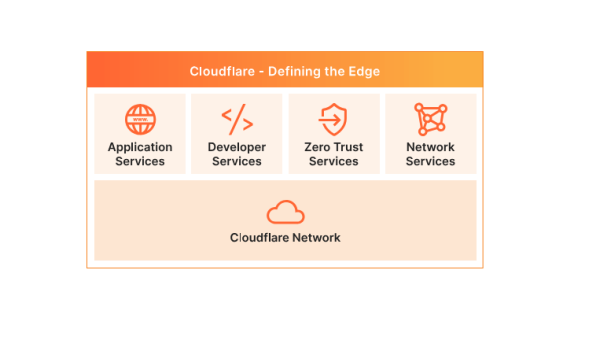
Refund policies can also be a topic of concern. If you decide to cancel your subscription or downgrade your plan midway through the billing cycle, it's important to understand how charges will be applied. Generally speaking, Cloudflare offers prorated refunds only on upgraded plans and not on downgrades or cancellations within a billing period. Therefore, it’s advisable for small businesses to closely evaluate their usage and requirements before making changes so they don’t lose out financially.
Setup and ongoing maintenance are integral parts of utilizing Cloudflare's services effectively. Many customers wonder what they can expect during these early stages. Upon signing up, you'll find that setting up your domain with Cloudflare is streamlined and intuitive; however, some technical know-how is beneficial for optimal configurations like DNS settings or SSL certificates. Once established, regular maintenance involves monitoring performance analytics provided by Cloudflare—these insights can guide any necessary adjustments in your usage tiers as your business evolves.
Remember that frequent engagement with resource materials such as community forums and support articles will equip you with knowledge regarding best practices while using Cloudflare's extensive features. By staying informed about updates related to pricing structures or new capabilities being introduced across different plans, you can ensure not only efficient use of resources but also alignment between costs incurred and benefits received from this robust platform.
Making the Right Choice for Your Business
In conclusion, selecting the right Cloudflare pricing plan is crucial for maximizing your online presence and resources. Each tier offers unique benefits, so it’s essential to match those features with your specific business needs. Take the time to review your current expenditures and the value you receive from Cloudflare’s services.
Assess whether you’re utilizing all the features included in your plan or if there are better options available that could serve you more effectively. Remember, understanding how each plan aligns with your goals can lead to significant savings and improved performance. Be proactive in evaluating what works best for your business today and as it evolves into the future.
